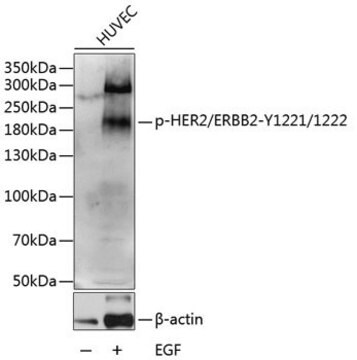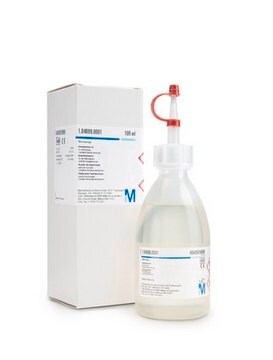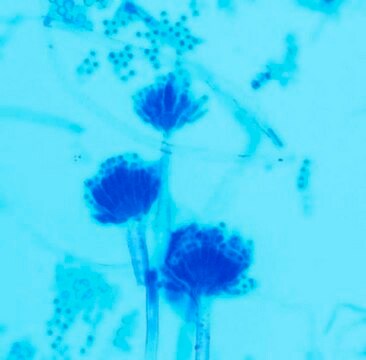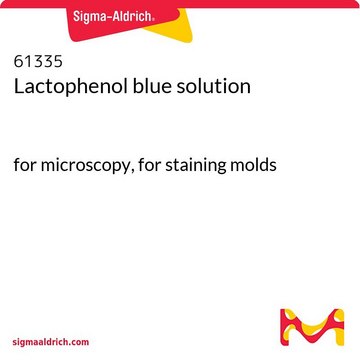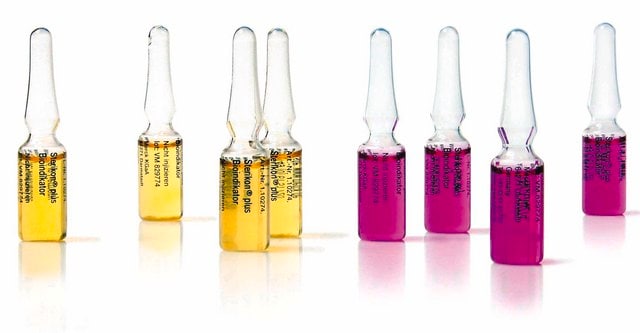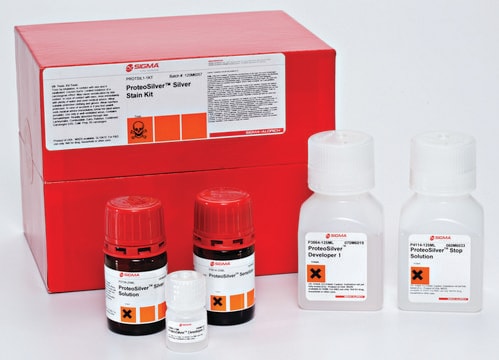Alle Fotos(1)
Wichtige Dokumente
10378461001
Roche
Chromozym PL
90%, powder, pkg of 20 mg
Synonym(e):
chromogenic substrate
Anmeldenzur Ansicht organisationsspezifischer und vertraglich vereinbarter Preise
Alle Fotos(1)
About This Item
UNSPSC-Code:
12352204
Empfohlene Produkte
Qualitätsniveau
Assay
90%
Form
powder
Verpackung
pkg of 20 mg
Hersteller/Markenname
Roche
Lagertemp.
room temp
Verwandte Kategorien
Allgemeine Beschreibung
Chromozym® PL is a chromogenic substrate. It is a synthetic tripeptide substrate and is more plasmin-specific.
Anwendung
Chromozym® PL has been used:
- to determine the plasmin enzymatic activity using human umbilical vein endothelial cells (HUVEC) cell extracts
- as a chromogenic substrate for proteolytic activity in murine lung homogenates
- as a substrate of plasmin in plasminogen activation assays
Qualität
Purity: 90% Tosyl-Gly-Pro-Lys-4-nitranilide acetate (enzymatic)
Contaminant: <0.5% free 4-nitraniline
Formula: C26H35N6O7SCOOCH3
Contaminant: <0.5% free 4-nitraniline
Formula: C26H35N6O7SCOOCH3
Sequenz
Tosyl-glycyl-polyl-lysine-4-nitranilide-acetate
Physikalische Form
Powder
Angaben zur Herstellung
Working concentration: Approximately 0.3 to 0.6 mM
Storage conditions (working solution): 2 to 8 °C
A substrate solution (3 mM) is stable for at least two weeks if stored at 2 to 8 °C. Avoid contamination with germs.
Storage conditions (working solution): 2 to 8 °C
A substrate solution (3 mM) is stable for at least two weeks if stored at 2 to 8 °C. Avoid contamination with germs.
Sonstige Hinweise
For life science research only. Not for use in diagnostic procedures.
Rechtliche Hinweise
Chromozym is a registered trademark of Pentapharm AG, Basel
Lagerklassenschlüssel
11 - Combustible Solids
WGK
WGK 2
Flammpunkt (°F)
Not applicable
Flammpunkt (°C)
Not applicable
Hier finden Sie alle aktuellen Versionen:
Besitzen Sie dieses Produkt bereits?
In der Dokumentenbibliothek finden Sie die Dokumentation zu den Produkten, die Sie kürzlich erworben haben.
Justin G Mathew et al.
Applied bionics and biomechanics, 2017, 9040161-9040161 (2017-07-01)
Vitronectin is a matricellular protein that plays an important role in both coagulation and angiogenesis through its effects on cell adhesion and the plasminogen system. Vitronectin is known to bind to endothelial cells upon integrin activation. However, the effect of
L S Engel et al.
The Journal of biological chemistry, 273(27), 16792-16797 (1998-06-27)
Comparisons of virulence between a Pseudomonas parent strain and an isogenic mutant devoid of protease IV have demonstrated a significant role for this enzyme during infection. We have characterized purified Pseudomonas aeruginosa protease IV in terms of its biochemical and
C Kluft et al.
Blood, 59(6), 1169-1180 (1982-06-01)
This study concerns a case of congenital homozygous deficiency in alpha 2-antiplasmin associated with a severe hemorrhagic diathesis. Heterozygous family members also show a mild bleeding tendency. The propositus is a 17-yr-old male born of white parents and showing a
Li-Jun Ma et al.
Journal of the American Society of Nephrology : JASN, 16(4), 966-976 (2005-02-25)
The potential and possible mechanisms for regression of existing glomerulosclerosis by angiotensin II type 1 receptor antagonist (AT1RA) and/or angiotensin I converting enzyme inhibitor (ACEI) were investigated. Adult male Sprague Dawley rats underwent 5/6 nephrectomy (Nx). Glomerulosclerosis was assessed by
Jessica L Bradshaw et al.
mSphere, 3(3) (2018-05-04)
Pneumonia is a pulmonary disease affecting people of all ages and is consistently a leading cause of childhood mortality and adult hospitalizations. Streptococcus pneumoniae and Pseudomonas aeruginosa are major lung pathogens commonly associated with community-acquired and nosocomial pneumonia. Additionally, mixed
Global Trade Item Number
| SKU | GTIN |
|---|---|
| 10378461001 | 4061838670861 |
Unser Team von Wissenschaftlern verfügt über Erfahrung in allen Forschungsbereichen einschließlich Life Science, Materialwissenschaften, chemischer Synthese, Chromatographie, Analytik und vielen mehr..
Setzen Sie sich mit dem technischen Dienst in Verbindung.
